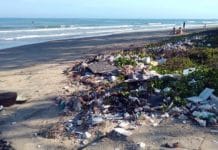The earth’s rivers and oceans have become polluted with broken-down plastic waste, synthetic fibers harming marine life, which mistakes them for food, and finally consumed by humans by way of seafood.
“We have created a new plastic that has the mechanical properties required by commercial fishing gear. If it eventually gets lost in the aquatic environment, this material can degrade on a realistic time scale,” said lead researcher Bryce Lipinski, a doctoral candidate in the laboratory of Geoff Coates, professor of chemistry and chemical biology at Cornell University. “This material could reduce persistent plastic accumulation in the environment.”
Commercial fishing contributes to about half of all floating plastic waste that ends up in the oceans “While research of degradable plastics has received much attention in recent years,” he said, “obtaining a material with the mechanical strength comparable to commercial plastic remains a difficult challenge.”
Coates and his research team have spent the past 15 years developing this plastic called isotactic polypropylene oxide, or iPPO. While its original discovery was in 1949, the mechanical strength and photodegradation of this material were unknown before this recent work. The high isotacticity (enchainment regularity) and polymer chain length of their material makes it distinct from its historic predecessor and provides its mechanical strength.
The rate of degradation is light intensity-dependent, but under their laboratory conditions, he said, the polymer chain lengths degraded to a quarter of their original length after 30 days of exposure.


